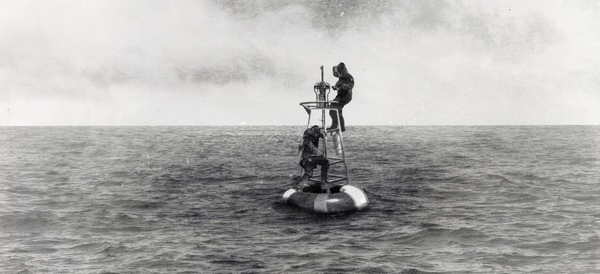A round-up of the week’s reviews
The ADA Project (2013), Conrad Shawcross. Installation view at Palais de Tokyo, Paris. Image courtesy the artist
Conrad Shawcross ‘The ADA Project’ (Digby Warde-Aldam)
Conrad Shawcross is an obvious example of a modern-day machine fancier. His work involves lots of moving parts, ‘Heath Robinson’ contraptions that quite literally go through the motions for their own sake. I’ve never been convinced – it’s all quite impressive, sure, but to what ends does his art perform? I was intrigued, then, when I heard about his most recent project at the Vinyl Factory’s huge outpost in Soho.
Love, Lust and Longing in the Freud Museum (Rebecca Swirsky)
In Beyond The Pleasure Principle, Freud wrote that libido comprises the fusion ‘of those instincts which have to do with all that may be comprised under the word “love”…the nucleus of which is…sexual love with sexual union as its aim.’ So be prepared, once you’ve walked along the manicured Maresfield Gardens and through the Freud Museum’s pale blue door, to be confronted by a lusty collection of figurines.
Impossible balance: Richard Serra’s sculptures at Gagosian Gallery (Melanie Vandenbrouck)
Entering Backdoor Pipeline is like stepping through the threshold of a cathedral of rusted steel. You feel compelled to whisper as you follow its curved path, but if you do speak up (or clap, hum, sing even), the sound reverberates wondrously, and glides along its surface. The cavernous darkness of the arched structure feels primeval. But despite its apparent simplicity, this is a tour-de-force of engineering. The complexity and integrity of Serra’s work is mind-blowing.
Lust, gin and grime: ‘Hogarth’s London’ at the Cartoon Museum (Peter Watts)
If Victorian London belongs to Charles Dickens, the Georgian city is William Hogarth’s. His seething crowds of pickpockets, bawds, gropers and cat-stranglers, sloshed on gin or sporting perfumed wigs, can usually be located precisely within the boundaries of Georgian London, be it in St James’s gaming clubs or Drury Lane boarding houses, outside the Monument or on route to the country at the foot of Tottenham Court Road.
Lost in Fathoms: Anaïs Tondeur (Ruth Garde)
Anaïs Tondeur is an artist who delights in expeditions…[H]er journeys conjure intriguing narratives that are in turn poetic, poignant, and scientifically compelling…Not simply a story but a mystery, a whodunnit, even, ‘Lost in Fathoms’ tells of the mysterious disappearance of a volcanic island called Nuuk, formed at and then apparently lost in the nexus between the North American and Eurasian continental plates.
